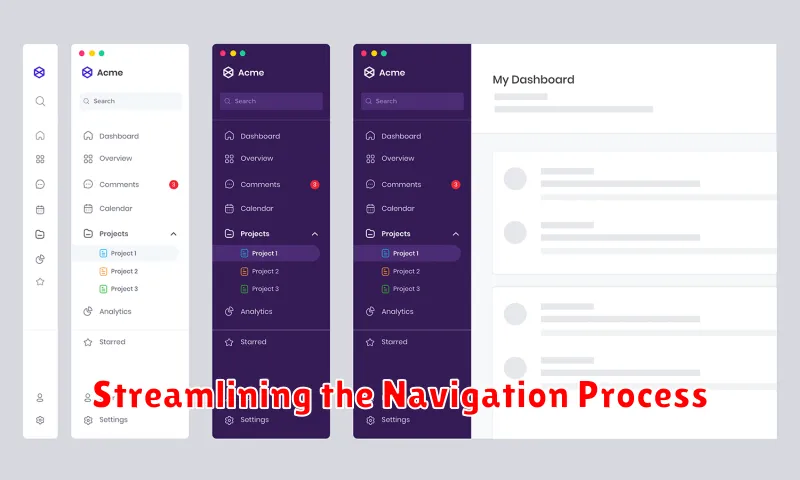In today’s competitive digital landscape, a seamless and engaging online shopping experience is paramount to success. E-commerce user experience (UX) directly impacts customer satisfaction, conversion rates, and ultimately, your bottom line. This article provides practical, actionable tips to elevate your online store and create a user-centered experience that fosters customer loyalty and drives sales. Whether you are just starting your e-commerce journey or looking to optimize an existing platform, these strategies will help you create a truly exceptional online shopping experience.
From streamlining navigation and optimizing product pages to enhancing mobile responsiveness and implementing effective customer support strategies, we’ll explore key areas for improvement. Learn how to implement best practices in e-commerce UX design to transform your website into a high-performing sales machine. By focusing on the needs of your target audience and addressing common pain points, you can improve e-commerce user experience, boost conversions, and establish a competitive edge in the online marketplace.
Understanding Your Target Audience
A crucial first step in enhancing user experience is developing a deep understanding of your target audience. Who are your ideal customers? What are their demographics, interests, online behaviors, and pain points? Answering these questions will inform every aspect of your e-commerce strategy, from product selection to website design.
Creating buyer personas can be highly effective. These semi-fictional representations of your ideal customers help you visualize and empathize with their needs. Consider factors like age, location, occupation, income level, and tech savviness. What motivates them to shop online? What are their preferred payment methods? What devices do they use to browse?
Market research is essential. Analyze website analytics, conduct surveys, and monitor social media conversations to gain insights into customer behavior and preferences. This data provides valuable feedback and can help you identify areas for improvement.
Streamlining the Navigation Process

A streamlined navigation process is crucial for a positive user experience. Customers should be able to find what they need quickly and effortlessly. A confusing or complex navigation structure can lead to frustration and lost sales.
Implement a clear and intuitive menu structure. Organize products into logical categories and subcategories. Consider using mega menus for stores with extensive inventories, allowing customers to browse multiple categories and subcategories from a single dropdown.
A prominent search bar is essential. Ensure it’s easily visible and provides accurate, relevant search results. Auto-suggest functionality can further enhance the search experience.
Breadcrumbs offer users a visual representation of their location within the website hierarchy, making it easy to navigate back to previous categories. This is especially helpful in complex e-commerce stores.
Faceted navigation allows users to filter products based on specific attributes such as size, color, or price range. This empowers customers to quickly narrow down their search and find exactly what they are looking for.
Optimizing Website Speed and Performance
In the fast-paced world of online shopping, website speed and performance are critical for success. A slow-loading website can lead to frustrated customers and lost sales. Every second of delay can significantly impact your bottom line.
Minimize HTTP requests by combining files and optimizing images. Large image files are a common culprit of slow loading times. Compressing images and using the correct file format (like WebP) can drastically improve performance.
Leverage browser caching. This allows repeat visitors to load your site faster by storing static assets like images and scripts locally. Implementing a robust caching strategy can significantly reduce server load and improve the user experience.
Choose a reliable hosting provider. Your hosting infrastructure plays a vital role in website performance. Opting for a provider with fast servers and adequate bandwidth is essential for a smooth and responsive online store.
Regularly monitor your website’s performance using tools like Google PageSpeed Insights. These tools provide valuable insights into areas for improvement and help you identify bottlenecks that are slowing down your site.
Creating a Mobile-Friendly Experience
In today’s e-commerce landscape, mobile optimization is no longer a luxury, but a necessity. A significant portion of online shopping occurs on mobile devices, and a seamless mobile experience is crucial for converting browsers into buyers.
Responsive design is paramount. Your website should adapt flawlessly to different screen sizes, ensuring a consistent and user-friendly experience across all devices. This involves adjusting layout, text size, and images dynamically to fit the screen.
Simplified navigation is also key for mobile users. Streamline menus and prioritize essential information. Consider implementing a hamburger menu to consolidate navigation options and avoid overwhelming the smaller screen.
Page load speed is critical on mobile. Optimize images and minimize code to ensure quick loading times. Slow loading speeds can lead to frustration and cart abandonment.
Finally, test thoroughly. Use various mobile devices and browsers to ensure your website functions correctly and provides a positive user experience across different platforms.
Enhancing Product Information and Visuals
Compelling product information and high-quality visuals are crucial for converting browsers into buyers. Provide detailed and accurate product descriptions that highlight key features and benefits. Address common customer questions proactively within the descriptions to minimize pre-purchase uncertainties.
Showcase your products through multiple high-resolution images from various angles. Consider incorporating 360° views or videos to provide a more immersive experience. Zoom functionality allows customers to inspect details closely, fostering trust and reducing return rates.
Structured data plays a vital role in enriching product information. Use schema markup to provide search engines with detailed information about your products, which can lead to enhanced search visibility and rich snippets in search results.
Simplifying the Checkout Process
A streamlined checkout is crucial for converting shoppers into paying customers. Minimize the number of steps required to complete a purchase. A lengthy or complicated checkout process can lead to cart abandonment.
Offer guest checkout options. Requiring account creation can deter customers who are looking for a quick and easy purchase. While encouraging account creation has its benefits, providing a guest checkout option caters to a wider audience.
Clearly display all costs upfront. Unexpected shipping fees or taxes revealed at the last minute can be frustrating for customers. Transparency about all costs builds trust and reduces the likelihood of abandoned carts. Provide various payment options to cater to different customer preferences. This could include credit/debit cards, digital wallets, and other popular payment gateways.
Optimize the checkout process for mobile devices. A responsive design ensures a smooth experience for customers shopping on their smartphones or tablets. This includes using larger buttons, simplified forms, and mobile-friendly payment options.
Providing Excellent Customer Service
Exceptional customer service is paramount to the success of any e-commerce business. It fosters loyalty and encourages repeat purchases. Prioritizing clear and accessible communication channels is key.
Offer multiple contact options such as live chat, email, and phone support. Ensure that response times are prompt and efficient. Customers appreciate quick resolutions to their inquiries.
Empower your customer service representatives to handle a variety of situations. Provide them with the training and resources necessary to address customer concerns effectively and efficiently.
Proactively address potential issues. For example, send order confirmation emails with tracking information and anticipated delivery dates. This keeps customers informed and reduces anxiety about their purchase.
Solicit feedback regularly. Post-purchase surveys can provide valuable insights into the customer experience. Use this feedback to identify areas for improvement and refine your customer service strategies.
Building Trust and Security

Security is paramount in e-commerce. Displaying trust badges from reputable security providers like Norton or McAfee can significantly boost customer confidence. Clearly communicate your security measures, such as SSL encryption, and explain how customer data is protected. A visible privacy policy is essential, outlining how information is collected, used, and secured.
Transparency builds trust. Be upfront about shipping costs, return policies, and any other potential fees. Provide clear contact information, including a physical address and phone number, to demonstrate legitimacy. Offering multiple secure payment options, such as PayPal or Apple Pay, adds another layer of trust and convenience for customers.
Customer reviews and testimonials are powerful trust signals. Showcase positive reviews prominently on your website. Address negative reviews professionally and publicly to demonstrate your commitment to customer satisfaction. This shows potential customers that you value feedback and are willing to resolve issues.

